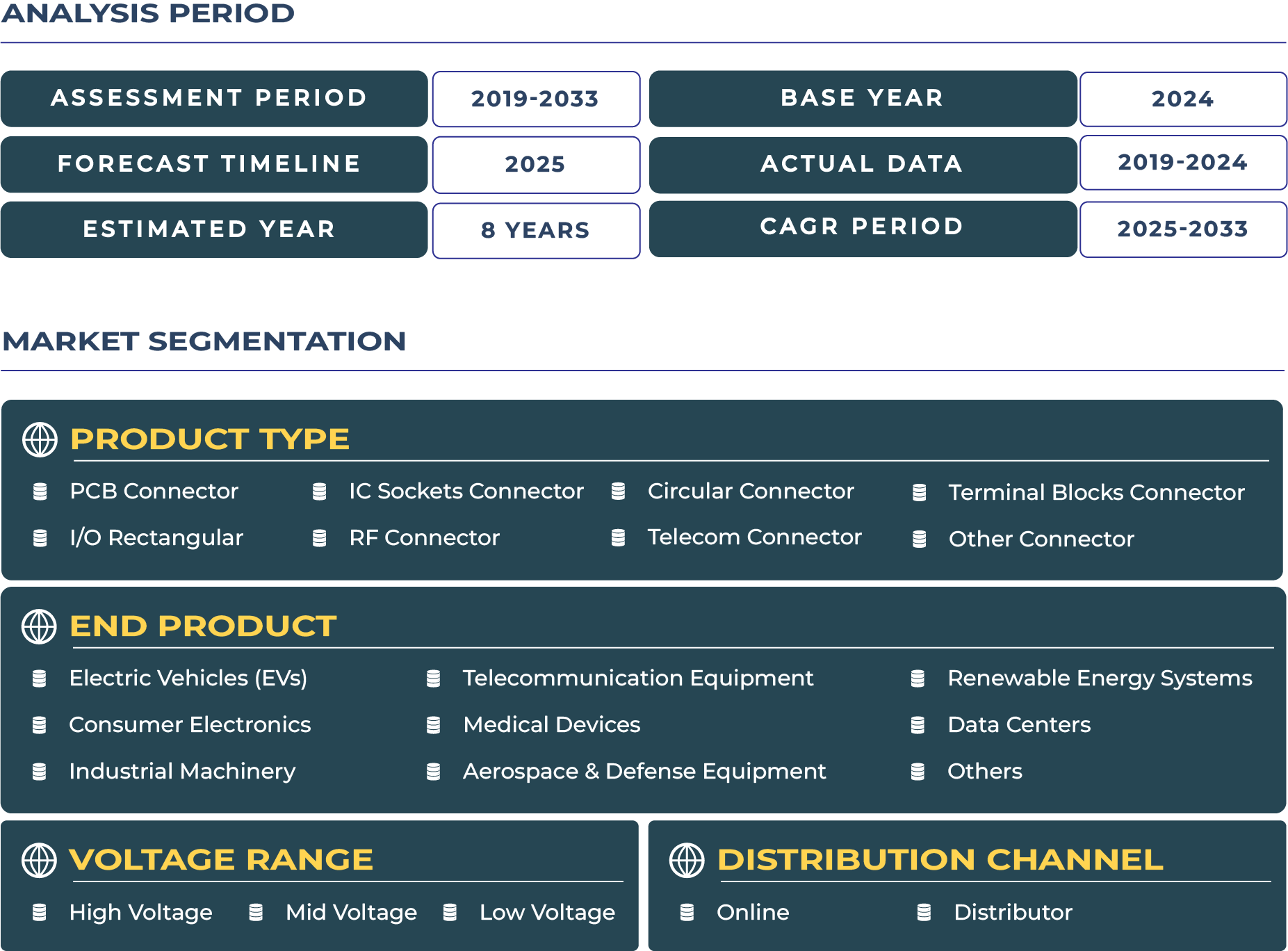Chile Connector Market Outlook
Securing the Future: How Traceable AI‑Grade Connectors Are Shaping Chile’s Electronics Leap
Chile stands at the cusp of a technological evolution. As a hub for smart city rollouts, fintech-enabled biometric systems, and urban infrastructure modernization, the country’s connector industry must adopt advanced traceability and intelligent design. AI-enabled CAD/EDA simulation, along with embedded RFID/NFC-enabled connectors, now serve as critical pillars. The connector market in Chile is projected at USD 175 million by 2033, at a CAGR of 6.1%—a forecasted trajectory confirming the nation’s push toward measurable electronic assurance and urban digital acceleration, as validated by DataCube Research.
Smart Traceability Meets Advanced Connector Design Intelligence
The Chilean connector landscape is witnessing a pivotal shift. Startup ecosystems in Santiago and regional engineering hubs are prioritizing traceable and simulation-ready connectors for public infrastructure. Embedded RFID/NFC within PCB connector headers enables end-to-end supply chain verification—critical in smart street lighting and biometric access-control systems now required by municipal authorities.
Urban Tech Boom Powers Connector Sector Momentum
Urbanization across Chile continues unabated, with over 88% of the population now residing in metropolitan areas, prompting rising demand for advanced electronics across service sectors. The connector market has responded by delivering lean, magnetic-assisted I/O rectangular and RF connectors, seamlessly integrated into point-of-service devices, digital kiosks, and diagnostic frameworks. A surge in test-and-measurement installations—driven by health-tech and telecom startups—has increased RF connector adoption by 22% year-on-year, while magnetic I/O connectors offer secure, tool-free attachment for handheld diagnostic modules. This trend spotlights how Chile’s connector sector is anchoring its growth in spatial efficiency and urban-tech readiness.
Complying with Urban Demand While Wrestling with Operational Friction
Chile connector market is refined by two main growth drivers. First, the proliferation of biometric systems in public and private sectors—driven by healthcare and transport digitization—has significantly boosted I/O connector demand.
However, challenges persist. Precision mating quality is a bottleneck—compact connectors suffer from higher signal‑integrity failure rates, particularly in Chile’s desert coastal testing environments. Additionally, labor available for PCB population and terminal block accuracy remains limited; several small assembly shops have seen rework rates exceed 15% due to inadequate soldering processes. Nevertheless, government-led vocational programs launched in 2023 aim to address these skill gaps, vital for fulfilling the intelligent connector sector’s growth potential.
Traceable Connector and CAD/EDA Simulation Trends Surge in Innovation Value
Smart manufacturing trends now include traceable connector assemblies embedded with RFID/NFC tags. Corporations in Antofagasta and Temuco have adopted traceable circular connectors in remote monitoring systems.
Strategic Data Opportunities: Licensing Design Tools and Embedding RFID Assurance Systems
Connector firms stand to benefit from two promising opportunities: first, licensing simulation-ready CAD/EDA tools tailored to connector design ensures scalability and faster go-to-market timelines.
External Forces Steering Chile Connector Market Trajectory
Several macro-economic influencers are steering market performance. First, the surge in electronics start-ups—over 340 in 2023 per CORFO records—has increased demand for flexible connector ecosystems. Distributors have responded by bundling PCB connector headers with flexible jumper systems and traceable IC sockets, reducing integration headaches for fast-moving OEMs. Second, GDP growth of 3.2% in 2023 (as reported by OECD) supports infrastructure investment, sustaining public tenders for smart systems that include connectors. Additionally, RoHS compliance rates of 95% within electronics factories reinforce exports and lower barrier for connector sector advancement.
Niche Domination and Sustainability Strategy in Connector Ecosystem
Chile’s connector ecosystem blends local and global players innovating in traceable, niche-specific components. In 2023, Nexxiot Chile launched rail-focused sensor connectors with RFID trace logs—designed for asset tracking. The application of “niche domination” shows Chilean startups identifying vertical use-cases and tailoring connectors to mining or urban infrastructure needs.







